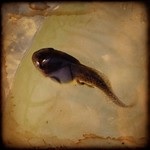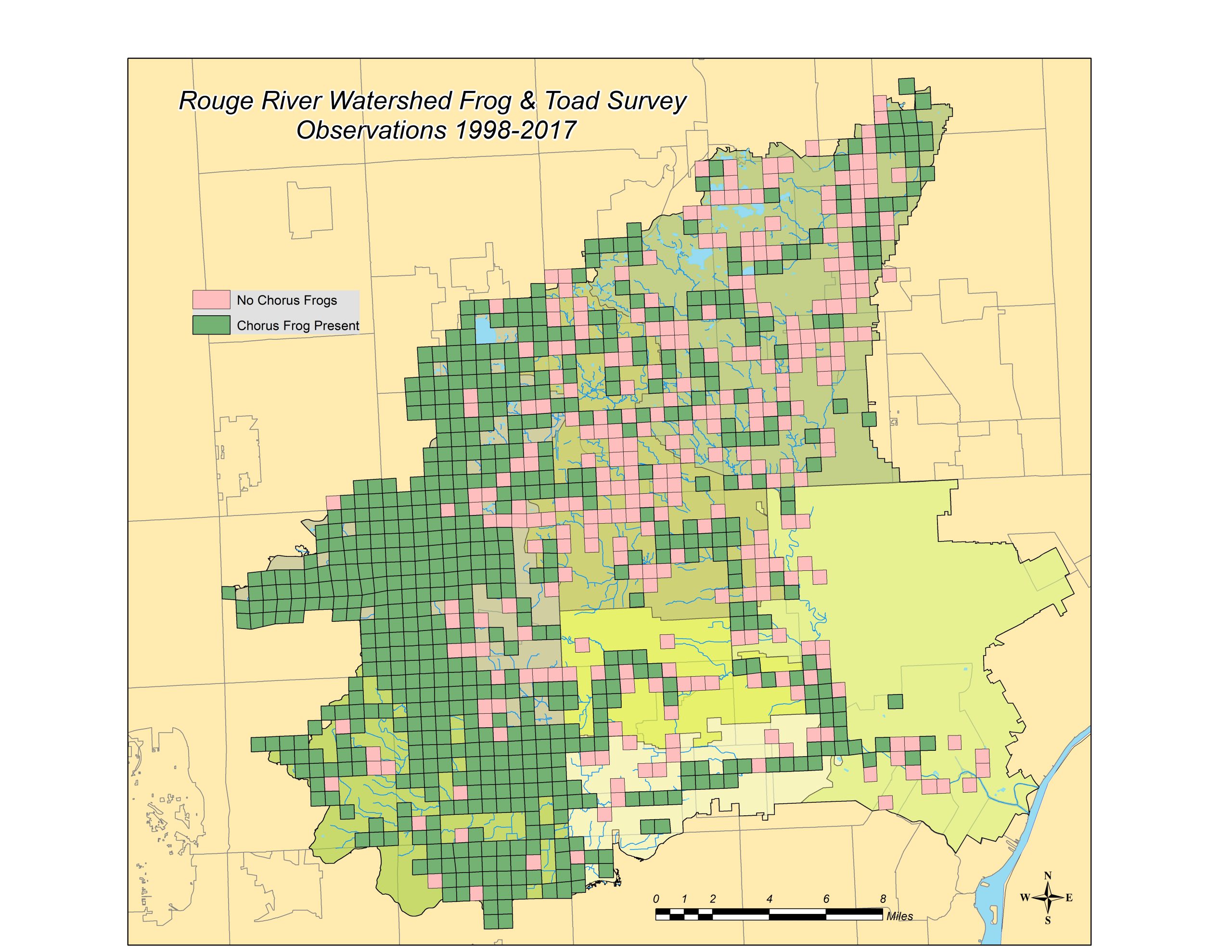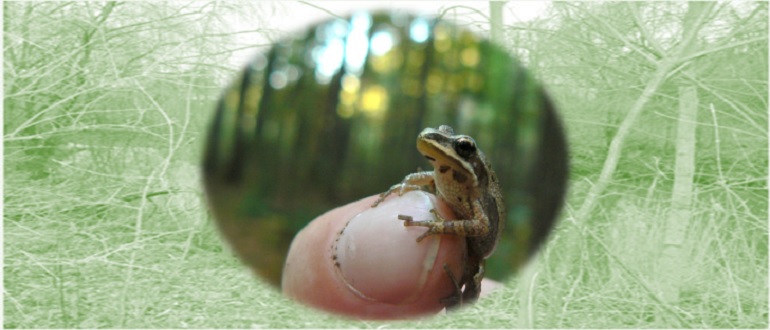A Song of Spring
GET TO KNOW
Midland Chorus Frog
One of the earliest songs of spring is the mating call of the midland chorus frog. Waking from a long winter’s nap, these tiny frogs raise their voices together in an evening serenade. And despite their tiny size – a full grown male chorus frog is a mere 1 ¼” long – this froggy choir can make an almost deafening sound.
Should you wish to hear a performance, be sure to plan your attendance for very early spring. The show begins as soon as temperatures stay above 40⁰ F and performances run (after dusk) only a few short weeks.
FUN FACT – Sticky Toes!
Chorus frogs are members of the frog family Hylidae and are related to treefrogs. Members of this family have sticky toe pads that help them cling to vegetation. However, while chorus frogs are semi-arboreal and tend to hang out in tall grasses, treefrogs are fully arboreal and head for the tree-tops. A local treefrog with some very sticky toes is the gray treefrog.
Also, remember that these singers are small and shy. So even if you are lucky enough to hear their choir, it is most unlikely that you will see the performers. These diminutive frogs are hard to spot, and they may go quiet as you approach. Generally tan in color, they have a characteristic dark “eye mask” stripe that runs from their nose, through the eye on each side, and down the side of the body. They also generally display a thin line of white along the top edge of their mouth. In most cases, they have three stripes down the back, but these may be missing or broken up into rough spots.
HABITAT AND LIFE CYCLE
Midland chorus frogs begin their lives in the chilly vernal ponds of spring. Their early growth and development – from egg to tadpole to adult frog – happens relatively fast for they must reach adulthood before the pond dries up in summer. While this rather severe timeline imposes a significant risk – any remaining tadpoles perish when the pond dries – there is one tremendous benefit to life in a vernal (temporary) pond. There are no fish! There are no fish to eat frog eggs and no fish to eat baby tadpoles.
Female frogs lay as many as a thousand eggs in a large clump of gelatinous goo that sticks to vegetation. Tadpoles hatch in about a week and are simply a round body with a strong tail.

Feeding primarily on algae (and breathing through gills), the minuscule tadpole grows powerful back legs and small front legs. Then as both tail and gills are absorbed into the body – the tadpole develops lungs and swims to the water’s surface to breath air. Note: Look carefully at the tadpole picture (unknown species) above, and you can see the very beginnings of the frog’s back legs.)
Once Midland chorus frogs reach their mature adult form, they leave the pond and head for higher ground. They are semi-arboreal and spend warm summer days jumping and clinging in the tall grasses and shrubs. As adults, they feed on a variety of small insects and spiders while trying to avoid such larger predators as waterfowl, raccoons, and skunks.
As temperatures drop, these tiny frogs find cozy places in the leaf litter to hibernate. During the long months of winter cold, they are able to undergo, and survive, partial freezing of their body tissues. Later, when the days warm, these adorable, tiny frogs wake and sing their spring serenade.
Early spring is mating season, and eager male hoppers head for the waters of the nearest vernal pond. There they call out to attract the ladies. Male frogs have both vocal cords and vocal sacs. The vocal sacs are highly flexible membranes attached to the underside of the mouth.

To call, the male frog closes both his nostrils and his mouth and then – with a rather tremendous amount of muscle exertion – passes air, back and forth, between his lungs and the vocal sac. The sac, which blows up like a very big bubble, serves to amplify and modulate the tone of the little fellow’s love song. It is believed that female frogs much appreciate the loudest singer; for a loud song may indicate a stronger potential mate.
Over a few short weeks, temporary pairs form as the smaller males hug the backs of the slightly larger females. Fertilization of eggs happens externally as the females lay their bundles of gooey eggs in the pond vegetation. Then, mission accomplished, both male and female return to the brush where they hop about through the summer months. Though they live independently, these little chorus frogs are semi-social and appear to appreciate the general presence of their fellow chorus frogs. On average, they enjoy a lifespan of hopping around for a good five years.
DISTRIBUTION
Midland chorus frogs are fairly common throughout the Rouge River watershed. Participants in the Rouge River Watershed Frog & Toad Survey have heard them in almost half of all survey blocks (49%). The below map shows the areas (green) where they have been heard at least once between 1998-2017. For more detailed information about species heard in each block over the years, check out this map.

TAKE ACTION
Frogs are important indicator species for tracking water quality and the overall health of the watershed. Because frogs and tadpoles have permeable skin (so they can absorb dissolved oxygen from water), they also absorb dissolved pollutants. Therefore, these wonderful little creatures are always highly at risk from the many chemical pollutants – such as motor oils, salts, fertilizers, and pesticides – that wash into our natural waterways. Therefore, a strong presence of a variety of frogs and toads is a good indicator of a healthy watershed.
FOTR has been monitoring the watershed presence of frogs and toads every year since 1998. With the help of our amazing volunteers, we will be out again soon to listen for the evening calls of our local frogs and toads. Good, scientific data on the presence and population trends of these important indicator species helps us influence/educate our corporate and governmental partners to shape policies and change practices.
There is still time to join us! We have a training session for volunteers this Saturday, so sign up now and come out to help the frogs. For additional information, please see FOTR Frog & Toad Survey
MAIN PHOTO CREDIT: Midland chorus frog (Pseudacris triseriata) – Ben Mazur CC-BY-2.0 image cropped

